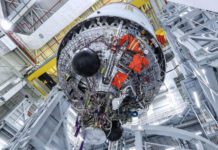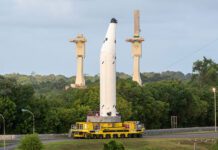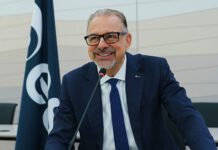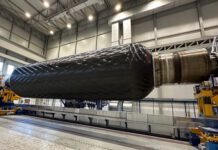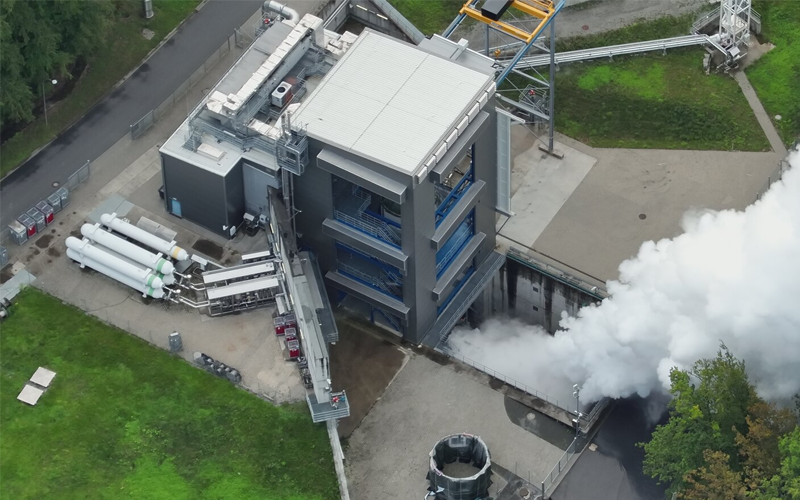
The European Space Agency, the German Space Agency DLR, and project prime ArianeGroup successfully completed a full-duration hot fire test of an Ariane 6 second stage.
Conducted on the P5.2 test stand at the DLR propulsion testing facility in Lampoldshausen, the test represented the entire sequence that the stage would be required to perform during the vehicle’s maiden flight. It included two firings of the stage’s Vinci engine with a total burn time of more than 680 seconds.
In addition to firing the Vinci engine, the testing also included the successful operation of the Auxiliary Power Unit (APU), a key element of the stage. The APU is utilized to pressurize the stage’s propellant tanks, which enables the Vinci engine to be restarted multiple times in orbit. In Ariane 5, this was accomplished with helium-filled spheres. The APU was in operation for a cumulative period of nearly 30 minutes during testing.
“This success for the Ariane 6 teams brings us closer to the final qualification of the upper stage,” said ArianeGroup CEO Martin Sion. “This crucial test has demonstrated the perfect simultaneous operation of the Vinci re-ignitable engine and the APU, which are two key technologies for the versatility of our new European launcher, allowing it to complete highly diverse missions.”
According to an ArianeGroup press release, the complete test results are currently being analyzed. The company expects that the results will lead to the Ariane 6 upper stage being declared flight-ready.
The successful test will be a welcomed reprieve for the Ariane 6 team, which has been forced to postpone the test firing of the Ariane 6 core stage twice. The rescheduled short firing of the Ariane 6 core stage is expected to take place on 5 September.

